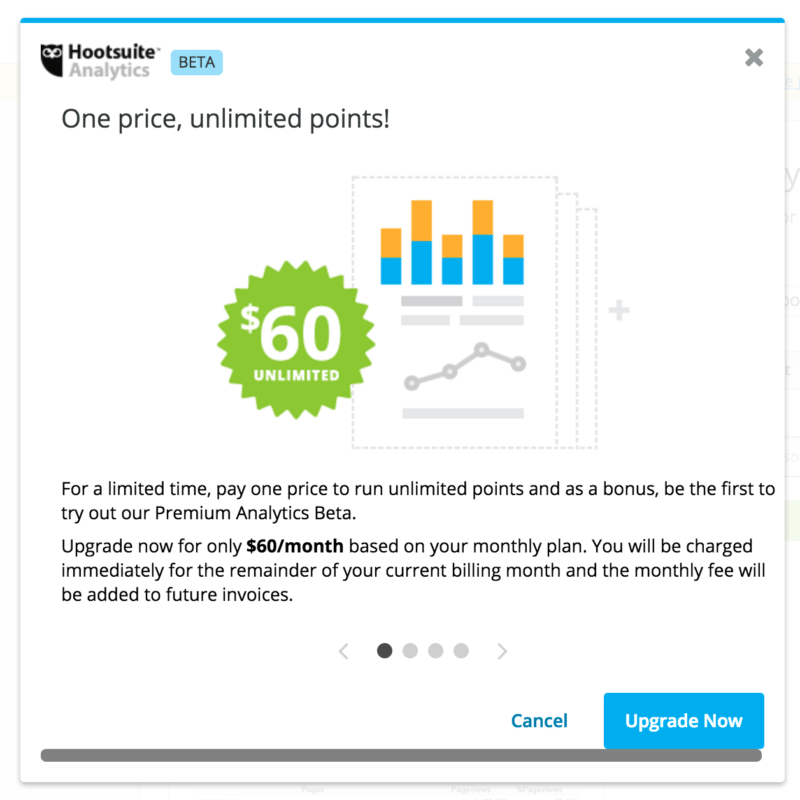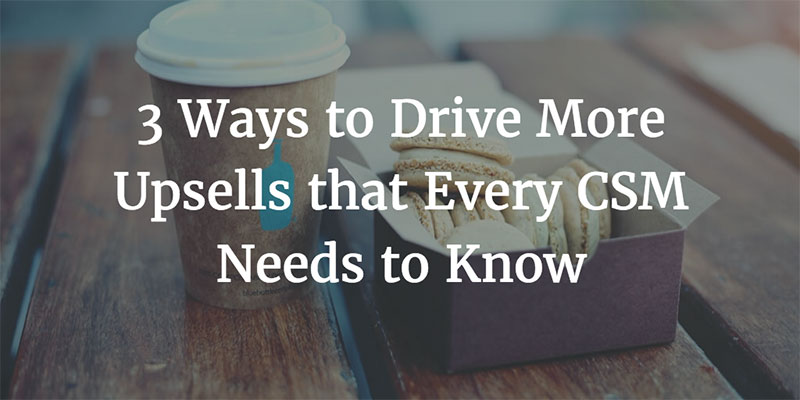Nikhil Hasija is the CEO of Azuqua, an integration platform that empowers unified customer experiences by connecting the applications, data, and processes across siloed teams in order to increase customer satisfaction and repeat revenue.
Sometimes the customer needs more of your product or services to achieve success. But upselling is a tricky topic. At what point in the customer journey should we reach out, and with which offers?
In wading through this ambiguity, you have a big role to play as the Customer Success manager. You are on the front line of the customer experience, and also the main advocate for your product. You need to hold the customer’s satisfaction first, but also know best the expansions that will be a win-win for both parties.
Your goal is to make the customer happy by selling them what they actually want and need. Here are three best practices to help you with this task:
1. Take advantage of natural usage milestones
You can set up alerts so that you get a notification when your customer nears their utilization limits (if that exists in your product). Let’s say a customer is on a pricing plan that allows them to add only five additional users. For this scenario, your upsell pitch might go as follows:
“Congratulations! You’ve successfully added another user. You have 1 seat left in your plan. Would you like to purchase more users or learn how to buy seats in bulk to save?”
The goal here is to take advantage of natural usage milestones and give customers the promotions that are best suited for them.
While many companies keep track of this and send out automated emails to the customer, you can also keep track of when your highest value customers reach these thresholds and set the notification to come to you, the CSM, so that you can reach out with a more personal touch.
2. Expose upsell content directly in the product so customers can tell you what they want
One way to know if your customer might be interested in the upsell is to show gated features that they could be getting in the next package up. In the Hootsuite example below, this is what customers see when they click on a link to purchase more points to unlock analytics reports.

The expected flow is the customer just buys, but what if they click cancel? Maybe this customer wants to buy but doesn’t have the authority. This is a great upsell opportunity. If the CSM were notified whenever a user from one of his/her top 20 accounts clicks on the offer but then doesn’t complete the purchase, the CSM could immediately reach out while the customer was still thinking about this subject and complete the purchase.
The Customer Success team should set up notifications for each CSM so they know exactly which customers have exhibited behavior that indicates readiness for the upsell. Many product teams will know which in-product behaviors indicate upsell readiness, but oftentimes the CSM doesn’t even notice customers who’ve reached those milestones until that customer’s contract comes up for renewal months later.
Want utilization alerts even faster? Maybe through Slack or Hipchat? Check this out.
3. Connect with other teams that are stakeholders in the customer journey
Customer Success is tricky because an existing customer is usually interacting with many parts of your company at the same time — sometimes without you even being aware of it.
For example, they might have had a small issue and submitted a support ticket. Perhaps they filled out a survey from the product team asking about what new features are most desired. Or they read the marketing team’s newsletters, announcements, and usage tips.
All of this is relevant information when you’re thinking about when to approach a customer for upsell. Does a customer have an open support ticket? Probably not the right time for an upsell. Have they indicated they are interested in a new feature by clicking on a link in a marketing email? That’s a great reason to reach out and sell them that feature.
Gainsight uses this best practice internally. The CSM team records customer feature requests in Gainsight and associates them to engineering projects in JIRA. When a new feature is completed, the CSM team is immediately notified so they can reach out to the customers that asked for the feature. This increases the number of upsell opportunities and the likelihood to close those opportunities because CSMs are reaching out exactly when the customer is ready with exactly what they want.
Take a closer look at how they do it.
At the end of the day…
Starting the upsell conversation is all about timing.
A good time to start the upsell conversation is:
- When a customer tells you they want something new
- When a customer exhibits in-app behavior that indicates interest in a feature they don’t already have
- When the engineering team completes a feature that specific customers have requested
- When a customer engages with marketing material about more advanced features
- When a customer nears utilization thresholds
A bad time to start the upsell conversation:
- When a customer has an open support ticket
- When the engineering team is still working on a bug that affects that customer
- When the customer just filled out a survey and indicated low satisfaction
Gainsight (especially when integrated with marketing automation, survey tools, CRM, support ticketing, and engineering project management tools with Azuqua) gives you access to all this information at your fingertips and sends you a Call-to-Action so you can take the right action at the right time.
